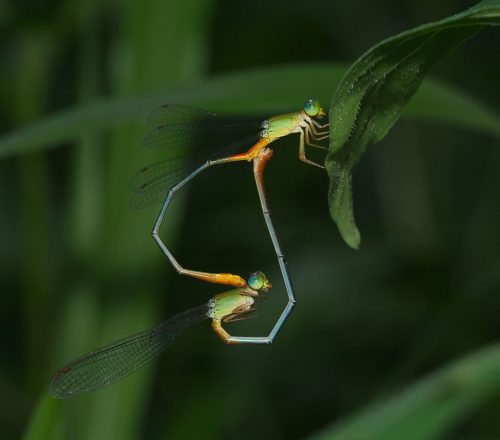Image courtesy of Jee & Nani Nature Photograph 2016.
Ever heard of damselflies engaging in same-sex behavior? It turns out many different animals, from birds to mammals to even insects, display same-sex behavior (SSB). However, since SSB reduces the production of viable offspring, the behavior is viewed as an evolutionary anomaly, raising important questions about why SSB has persisted as a behavioral trait.
The most common perspective assumes that in animals, different-sex behavior (DSB) was the baseline from which SSB evolved, and that SSB has special evolutionary benefits that cause it to be maintained. However, a recent study conducted at the Yale School of Forestry and Environmental Studies (FES) reveals several flaws in this model. Julia Monk, a graduate student at Yale FES and one of the article’s key contributors, notes that “when evolutionary biologists see a trait that’s widespread across evolutionary lineages, we at least consider the idea that the trait is ancestral—so why haven’t people considered that hypothesis for SSB?”
Monk and co-authors propose a shift in perspective, where SSB and DSB evolved from a common ancestor that did not distinguish the sex of its partners. “Compelling evidence suggests the last common ancestor of sexually reproducing animals was hermaphroditic, which, if true, would support our hypothesis,” Monk said. In this regard, the SSB is not an anomaly, but an important yet oft-misunderstood behavior with ancient origins. Understanding the evolution of sex, “requires us to interrogate assumptions that are perhaps colored by personal and cultural perspectives,” Monk said.
Sources:
[1] Monk, J.D., Giglio, E., Kamath, A. et al. An alternative hypothesis for the evolution of same-sex sexual behaviour in animals. Nat Ecol Evol 3, 1622–1631 (2019). https://doi.org/10.1038/s41559-019-1019-7

